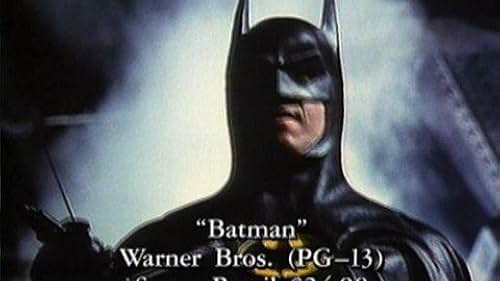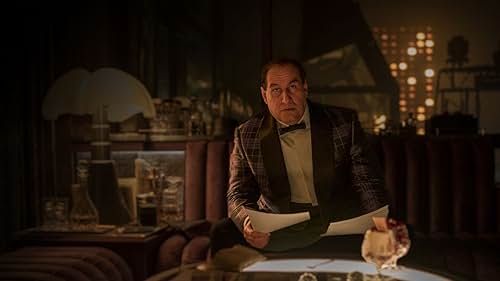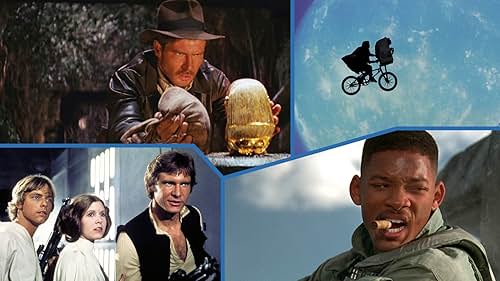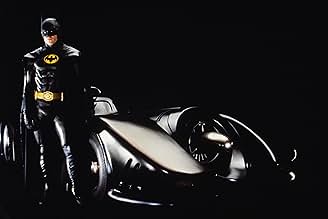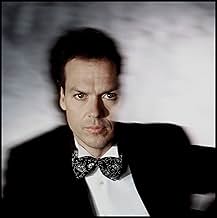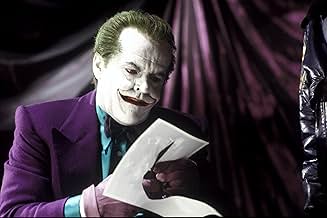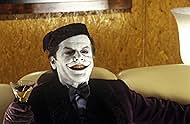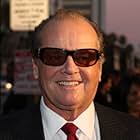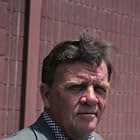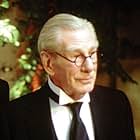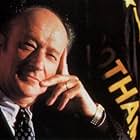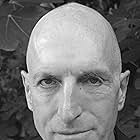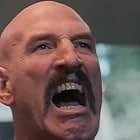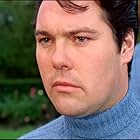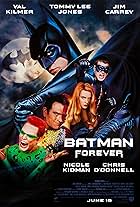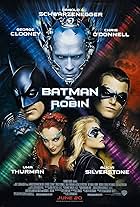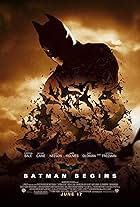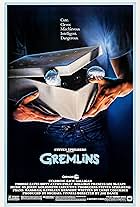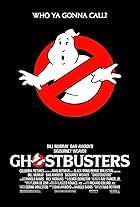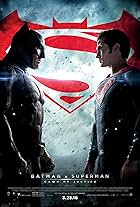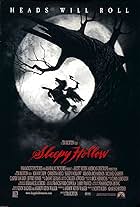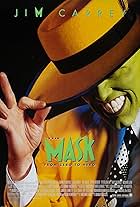The Dark Knight of Gotham City begins his war on crime with his first major enemy being Jack Napier, a criminal who becomes the clownishly homicidal Joker.The Dark Knight of Gotham City begins his war on crime with his first major enemy being Jack Napier, a criminal who becomes the clownishly homicidal Joker.The Dark Knight of Gotham City begins his war on crime with his first major enemy being Jack Napier, a criminal who becomes the clownishly homicidal Joker.
- Won 1 Oscar
- 11 wins & 28 nominations total
Mac McDonald
- Goon
- (as Mac Macdonald)
Storyline
Did you know
- TriviaRobin Williams was offered the role of Joker when Jack Nicholson hesitated. He had even accepted the role, when producers approached Nicholson again and told him Williams would take the part if he did not. Nicholson took the role, and Williams was released. Williams resented being used as bait, and not only refused to play Riddler in Batman Forever (1995) but also refused to be involved in any Warner Bros. productions until the studio apologized. His next project with the studio would be Fathers' Day (1997).
- Goofs(at around 1h 2 mins) When destroying the paintings in the museum, one of Joker's henchmen puts several hand prints on a painting. Later, we see Joker imitating the statue, and in the background we can see the painting that had supposedly been fingerpainted is not.
- Quotes
The Joker: Tell me something, my friend. You ever dance with the devil in the pale moonlight?
Bruce Wayne: What?
The Joker: I always ask that of all my prey. I just... like the sound of it.
[shoots him]
- Crazy creditsThe opening credits appear as the camera goes through/around a giant Batman symbol.
- Alternate versionsIn order to put the 126m. movie in 120m. video cassette, South Korean video distributor cut two scenes when the movie was first released on VHS. The first one is a whole sequence where The Joker kills Vinnie Ricorso with a quill pen in front of the city hall. The second is the arrival of Batman on the rooftop of the cathedral and a few fight scenes with the goons. After the police sweeps the cathedral with searchlights, the scene abruptly cut to the scene where a goon with rope (the third goon that attacks Batman) desperately seeks Batman. Also, the initial South Korean DVD release has only widescreen version of the movie, so it featured a strange cut where Vicki pretends to tempt The Joker. This scene has been fixed on the special edition DVD.
- ConnectionsEdited into 5 Second Movies: Batman (2008)
- SoundtracksThe Future
Written, Produced and Performed by Prince
[Heard while the tourist family is trying to hail a taxi]
Featured review
Although today it can be seen as something of a flawed work - compromised somewhat by continual studio interference - Burton's first Batman film (1989) remains a surprisingly vivid comic-book style action adventure film, peppered throughout by the director's continual quirks and characteristics, which for me, makes the experience all the more unique. I know it's almost the accepted opinion these days to reject Burton's vision, post Batman Begins (2004); with many critics dismissing this as closer in tone to the retro 60's TV series, which is bull, as we all know. At the time, this was considered the darkest knight of all, and the continual shift into more violent and lurid psychological territory presented by its sequel, Batman Returns (1992), saw Burton dismissed from the series indefinitely. Although Nolan's subsequent Batman films have attempted to take the franchise into more credible areas - and with great success - they for me lack that certain spark of imagination and subversive sense of humour that made the Burton films so radical and so much fun.
Here, the world of Batman - as presented by Burton - gives the film much of its power. Whereas previous adaptations of the character had placed him within the context of a recognisable present-day environment, this Batman creates a dark, Gothic underworld that is part Metropolis (1927), part Gilliam's Brazil (1985). You could also argue that there's a touch of Blade Runner (1982) presented here as well, with the retro-futurist look of distressed exteriors and Art Nouveau creating an odd juxtaposition; suggesting an almost timeless setting that is falling rapidly into despair. With these references in place, Burton goes wild with strokes of German Expressionism and references to film-noir, as he plays not only with an excellent use of shadow and composition, but also with a sly and irreverent use of colour. For example, with this presentation of the Joker (still a contentious factor for some viewers), Burton gives us a screaming, pop-art inspired lunatic - again, part Warhol, part Edward G. Robinson - with the typical charm and caddish likability that only Nicholson could truly convey.
I have no problem with this presentation of the joker. Ledger's variation exists in a different world with a completely different tone, so such comparisons are ultimately faulty! The only similarity is that in both films the Joker dominates the proceedings, more so than Batman himself. In Nicholson's hands, the Joker is dangerous *and* amusing; his charm combined with his insanity making him even more fascinating. He is, as he proclaims, an "artist"; someone willing to disfigure their own fiancé for the purposes of creative expression. "I create art until someone dies", he says, and we believe him. The introduction to the Joker - post-transformation - is still a completely iconic scene, as he aggressively demands a mirror from his plastic surgeons and then smashes it in a fit of mad giggles and inevitable hysterics. This scene - like the following one in which he reaps revenge on a former partner that betrayed him - is straight out of the best of post-war Noir. Admittedly, Batman, by comparison, seems less interesting; with the limitations of a character who essentially hinges around the absurd idea of dressing up in a rubber costume and fighting crime, always requiring a great leap of faith on the part of the audience, as he is forced to become even more brooding and serious in order to remain somewhat plausible.
Regardless of what more obsessive comic-book fans might suggest, I thought the style of this film - with its use of framing and composition - was pure comic-strip. It's not a graphic novel adaptation, but a proper comic book style adventure; with the skewed angles and tight editing creating that feel of reading from one panel to the next. It benefits from the team that Burton surrounds himself with, from the cinematographer Roger Pratt, who shot the aforementioned Brazil and turned the seedy side of London into a screaming inferno for Neil Jordan's great film Mona Lisa (1986), as well as composer Danny Elfman and the late production designer Anton Furst. The only thing that really lets us down are a couple of somewhat dated optical effect shots, such as the introduction of Batman looking down on the city from a high-rise tower block, to some obvious miniature work that probably ties in with Burton's fondness for the work of Ray Harryhausen or director Mario Bava. Nonetheless, these are minor flaws that we face in numerous films and ones that are easily overlooked.
Ultimately, the argument of realism offered by many detractors of Burton's Batman films makes very little sense; again, we're talking about a film in which a billionaire playboy dons a head-to-toe rubber costume and fights crime at night - how much more plausible can this get? Burton's approach to Batman, drawing on some of the more revisionist comic book works of Frank Miller and Alan Moore, conveyed a darker, more personal slant to the character, but still retained that sense of colour, fun and imagination that the more recent Batman films seem to have lost. They're still great films, but for me, the two Batman projects from Burton capture the spirit and tone of the character perfectly, as well as conveying a naturally intuitive approach to film-making that resulted in some genuinely interesting cinematic work. The follow up, Batman Returns would be even better, and remains probably my favourite Batman film, if not my favourite Tim Burton film of all time.
Here, the world of Batman - as presented by Burton - gives the film much of its power. Whereas previous adaptations of the character had placed him within the context of a recognisable present-day environment, this Batman creates a dark, Gothic underworld that is part Metropolis (1927), part Gilliam's Brazil (1985). You could also argue that there's a touch of Blade Runner (1982) presented here as well, with the retro-futurist look of distressed exteriors and Art Nouveau creating an odd juxtaposition; suggesting an almost timeless setting that is falling rapidly into despair. With these references in place, Burton goes wild with strokes of German Expressionism and references to film-noir, as he plays not only with an excellent use of shadow and composition, but also with a sly and irreverent use of colour. For example, with this presentation of the Joker (still a contentious factor for some viewers), Burton gives us a screaming, pop-art inspired lunatic - again, part Warhol, part Edward G. Robinson - with the typical charm and caddish likability that only Nicholson could truly convey.
I have no problem with this presentation of the joker. Ledger's variation exists in a different world with a completely different tone, so such comparisons are ultimately faulty! The only similarity is that in both films the Joker dominates the proceedings, more so than Batman himself. In Nicholson's hands, the Joker is dangerous *and* amusing; his charm combined with his insanity making him even more fascinating. He is, as he proclaims, an "artist"; someone willing to disfigure their own fiancé for the purposes of creative expression. "I create art until someone dies", he says, and we believe him. The introduction to the Joker - post-transformation - is still a completely iconic scene, as he aggressively demands a mirror from his plastic surgeons and then smashes it in a fit of mad giggles and inevitable hysterics. This scene - like the following one in which he reaps revenge on a former partner that betrayed him - is straight out of the best of post-war Noir. Admittedly, Batman, by comparison, seems less interesting; with the limitations of a character who essentially hinges around the absurd idea of dressing up in a rubber costume and fighting crime, always requiring a great leap of faith on the part of the audience, as he is forced to become even more brooding and serious in order to remain somewhat plausible.
Regardless of what more obsessive comic-book fans might suggest, I thought the style of this film - with its use of framing and composition - was pure comic-strip. It's not a graphic novel adaptation, but a proper comic book style adventure; with the skewed angles and tight editing creating that feel of reading from one panel to the next. It benefits from the team that Burton surrounds himself with, from the cinematographer Roger Pratt, who shot the aforementioned Brazil and turned the seedy side of London into a screaming inferno for Neil Jordan's great film Mona Lisa (1986), as well as composer Danny Elfman and the late production designer Anton Furst. The only thing that really lets us down are a couple of somewhat dated optical effect shots, such as the introduction of Batman looking down on the city from a high-rise tower block, to some obvious miniature work that probably ties in with Burton's fondness for the work of Ray Harryhausen or director Mario Bava. Nonetheless, these are minor flaws that we face in numerous films and ones that are easily overlooked.
Ultimately, the argument of realism offered by many detractors of Burton's Batman films makes very little sense; again, we're talking about a film in which a billionaire playboy dons a head-to-toe rubber costume and fights crime at night - how much more plausible can this get? Burton's approach to Batman, drawing on some of the more revisionist comic book works of Frank Miller and Alan Moore, conveyed a darker, more personal slant to the character, but still retained that sense of colour, fun and imagination that the more recent Batman films seem to have lost. They're still great films, but for me, the two Batman projects from Burton capture the spirit and tone of the character perfectly, as well as conveying a naturally intuitive approach to film-making that resulted in some genuinely interesting cinematic work. The follow up, Batman Returns would be even better, and remains probably my favourite Batman film, if not my favourite Tim Burton film of all time.
- ThreeSadTigers
- Jul 29, 2008
- Permalink
Details
- Release date
- Countries of origin
- Official site
- Languages
- Also known as
- Betmen
- Filming locations
- Knebworth House, Knebworth, Hertfordshire, England, UK(Wayne Manor; exterior)
- Production companies
- See more company credits at IMDbPro
Box office
- Budget
- $35,000,000 (estimated)
- Gross US & Canada
- $251,409,241
- Opening weekend US & Canada
- $40,489,746
- Jun 25, 1989
- Gross worldwide
- $411,569,241
- Runtime2 hours 6 minutes
- Color
- Aspect ratio
- 1.85 : 1
Contribute to this page
Suggest an edit or add missing content


